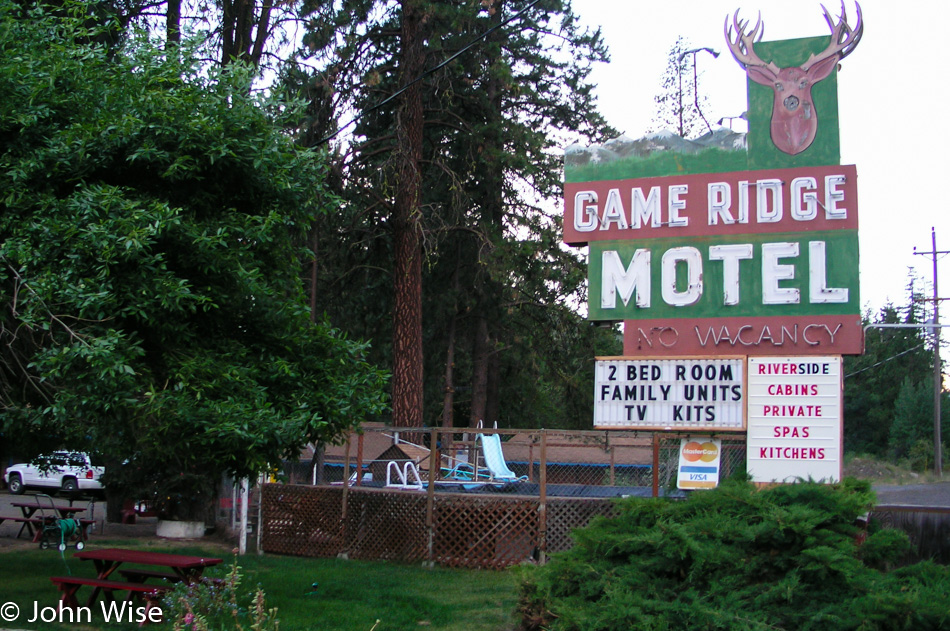
I’m going through the torture of having minimal notes and even a spreadsheet itinerary from this trip over the 4th of July long weekend, but luck or maybe old age would have it that 16 years later, as I try to pull any impressions that were made during this trip, I struggle to find enough details.
So, I end up with relatively weak blog entries where the finer points are slim. In this instance, I’m able to put a shell together and occasionally more things that hinge on the notes that Caroline happened to be keeping. Here in 2020, when I finally got around to this backfill operation, I learned that this motel is no longer on this earth. Only two other photos of the sign are found on the internet, and both of those were taken after the place closed. This shouldn’t matter much, but I don’t believe that 16 years ago, I was able to see that the corporatization of America would start to eliminate small motels in favor of larger, more modern hotels. This begs the question: what incentive exists for investors to build or renovate these rustic retreats that are already cheaper than their big-city counterparts, which draw in a clientele opting for greater conformity?
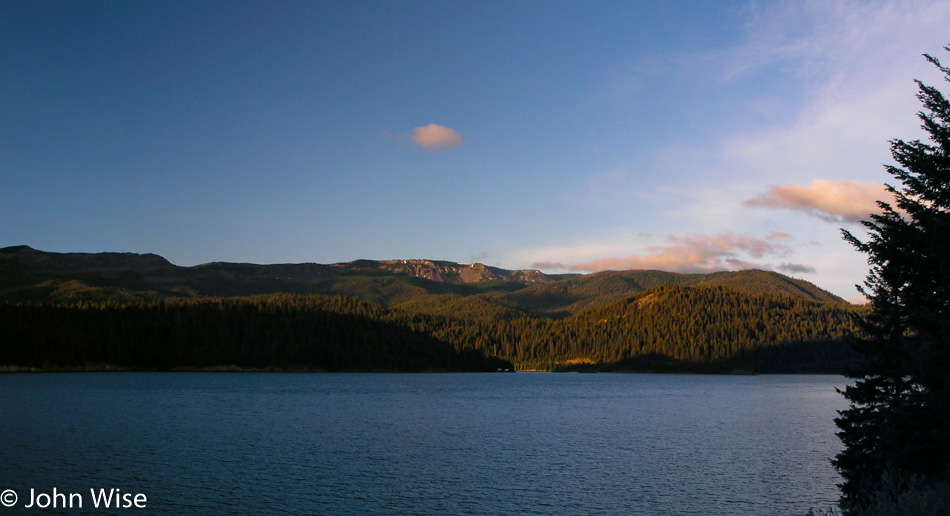
Rimrock Lake in better days. I say this as upon looking up the locations of where these photos were taken I found the lake has been nearly drained for farm irrigation. Maybe global warming plays a role, too, but who’s going to admit that in the current political climate? I feel nostalgic for these days early in the new millennium when we were still trying to clean the air and waters of our country. Back then, when we took these long drives, it was inevitable that we’d spend a good amount of time scrubbing the windshield at a gas station, sometimes even between refuelings, as we tried to remove the bugs plastered to our window to the world. Today, we rarely have to worry about encounters with swarms of bugs as it seems our incessant obsession with ridding our crops of pests is delivering results. How detrimental is a situation where humans can have such a large impact on such an important resource?
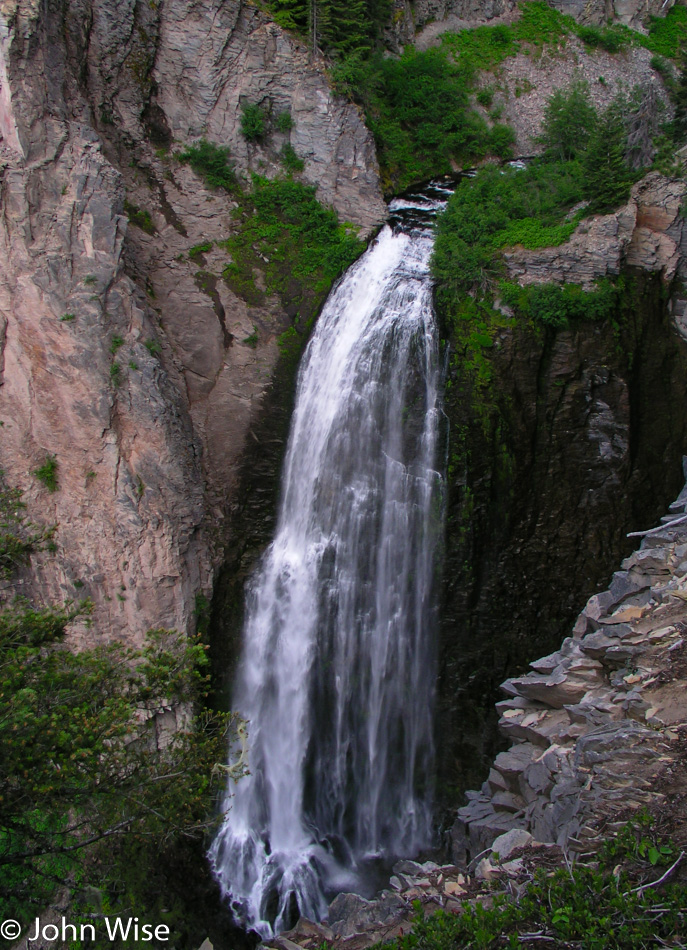
I spent a fair amount of time trying to find these falls that obviously were somewhere between Rimrock Lake and the park entry for Mt. Rainier, but had no luck. Caroline took a peek at Google Maps and came up with Clear Creek Falls, easily accessible from our road.
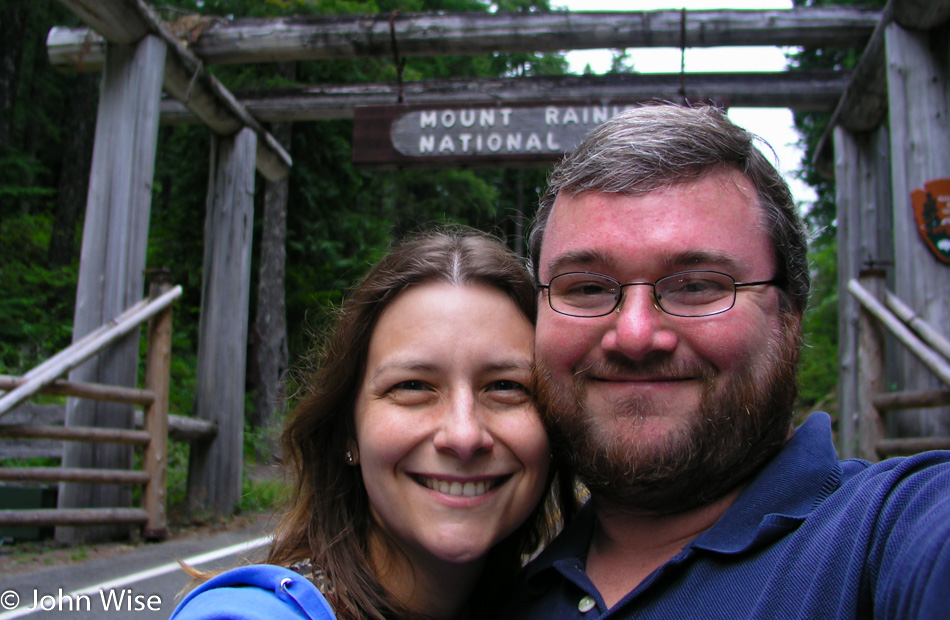
Excited to enter another national park that is new to us.
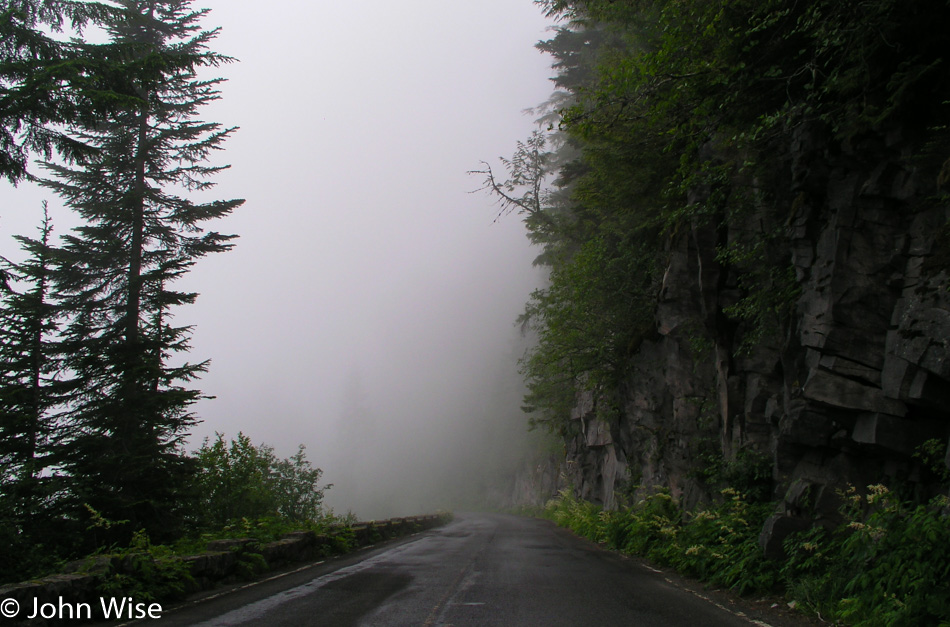
Our hopes of things opening up to spectacular views that will invite us to spend the hours of time we’ve allocated to exploring Mt. Rainier are dwindling.
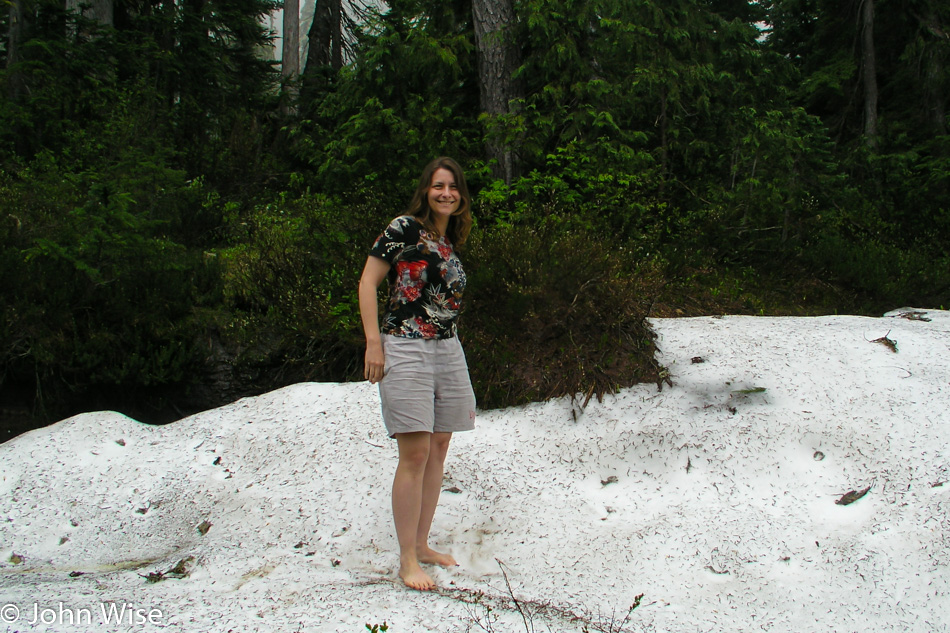
This was a surprise find: snow. While it’s foggy up here, the temperature is actually quite nice, so it seemed like a great opportunity to take off the shoes and pose in the snow on Rainier.
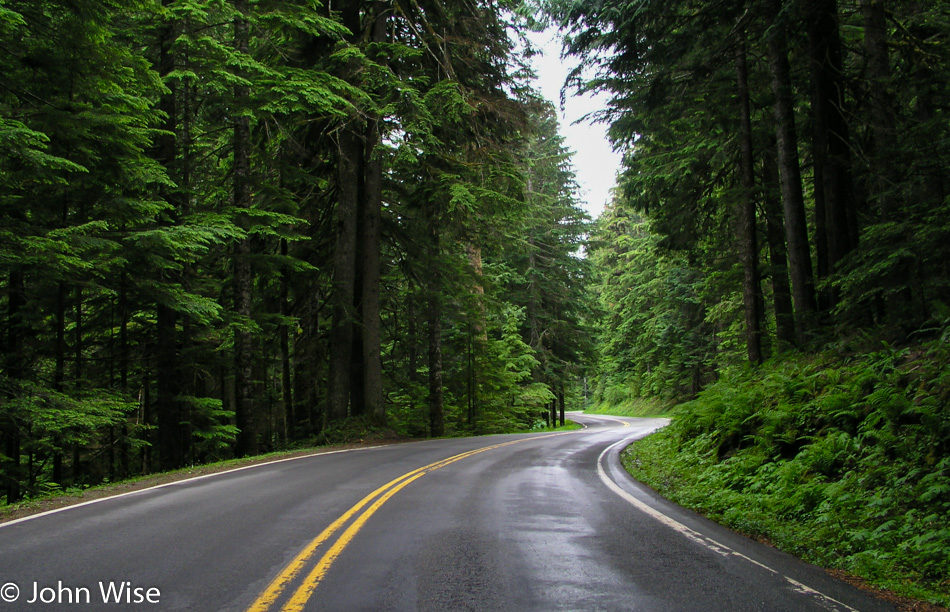
We’re not wasting any time hanging out hoping for an improvement in the weather as we’d been warned long ago that we could visit this national park and never see what we came for. Down the mountain, we went on our way through Ashford over to Shelton. I mention Shelton because it was there by the side of the road that we picked up two pounds of cherries, one dark and one Rainier. Caroline nearly finished the Rainiers before we were 20 minutes up the road.
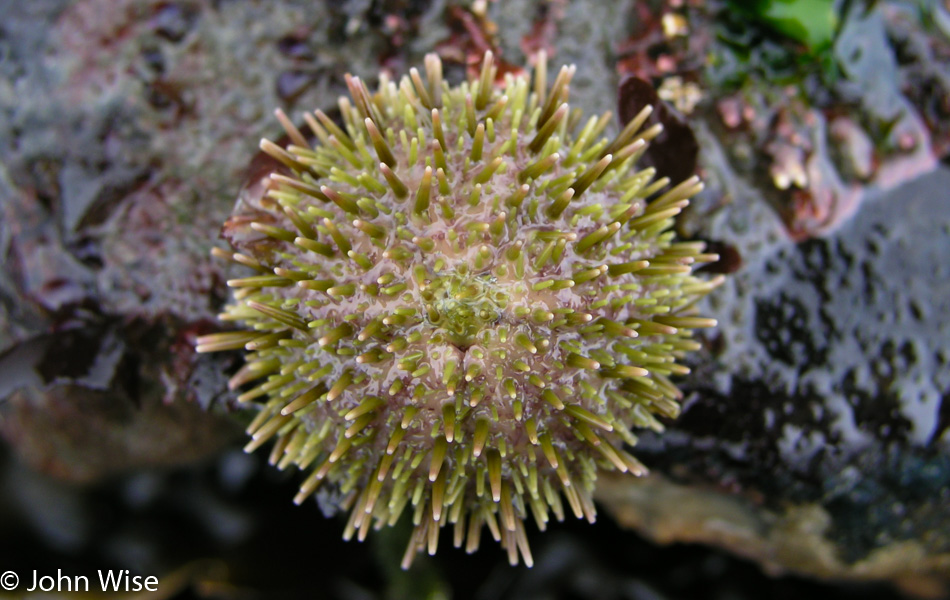
We arrived in Port Townsend just in time to attend a tiny Low Tide Festival up here on the Olympic Peninsula. If we couldn’t admire mountains stretching 14,000 feet into the sky, we could be just as happy exploring tidepools at sea level. The lady volunteering at the information booth couldn’t believe that we had driven up from Phoenix mainly to experience the exceptionally low tide celebrated by this event. After a short conversation, we headed to the coast to explore.
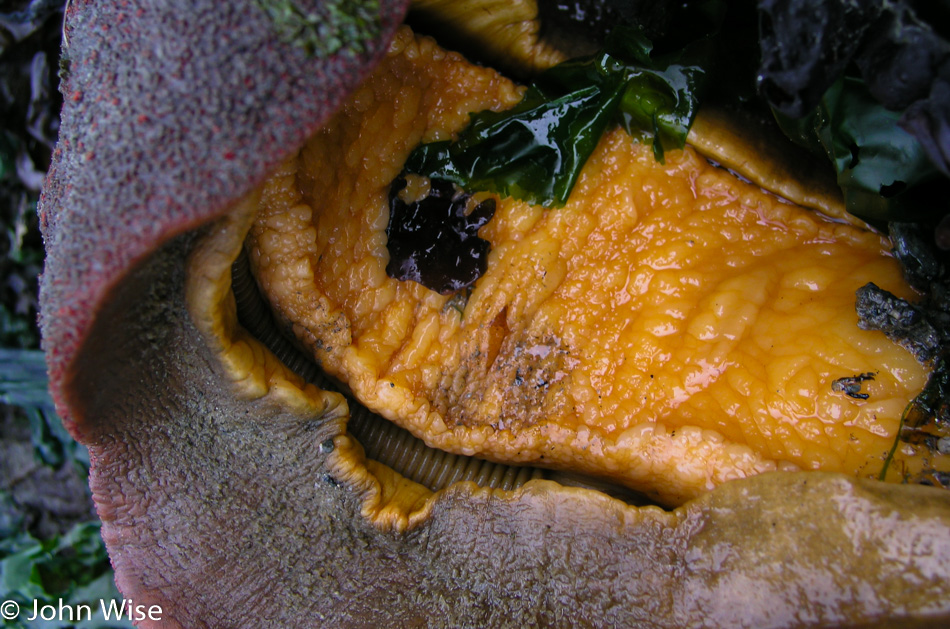
Who doesn’t love chitons? The orange part is its foot, and if we look in the gap at what looks like a kind of cable, that’s its gills. Back when we picked this up, smartphones hadn’t been invented yet, so we couldn’t ask Google to show us the anatomy of a chiton to determine what its head was and where its anus was. Good thing we didn’t choose to suck one end or the other.
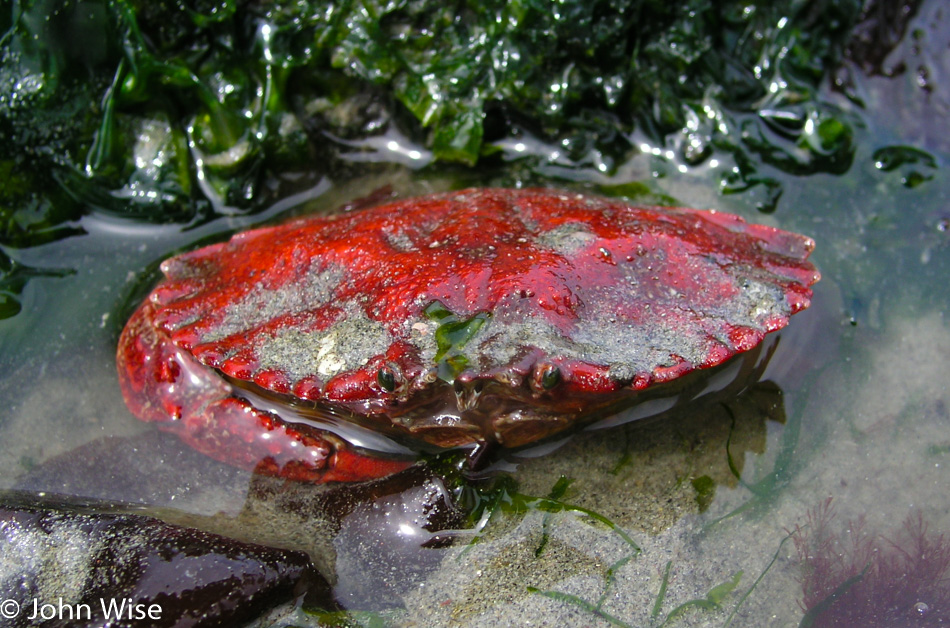
On the subject of technology: I shot this image with our Olympus C-5050 Zoom that was able to capture 5MP images. Just that month, in July 2004, Sprint released a phone with a 1.3-megapixel camera capable of capturing 1280 x 960 and sending it wirelessly, a first in the American market. The best I could do with the photos we were shooting during these days was dump them on a notebook so I could clear the memory card and keep on shooting. At this time, I was shooting on 256MB Compact Flash cards that were only $110 each compared to the 2GB cards that were going to come out later in the year for $800 but were targeted at a price too high for Caroline and me. Sixteen years later, I shoot on a 256GB SD Card that cost me about $65 and would have saved over 100,000 of the 5MP images I was shooting back then.
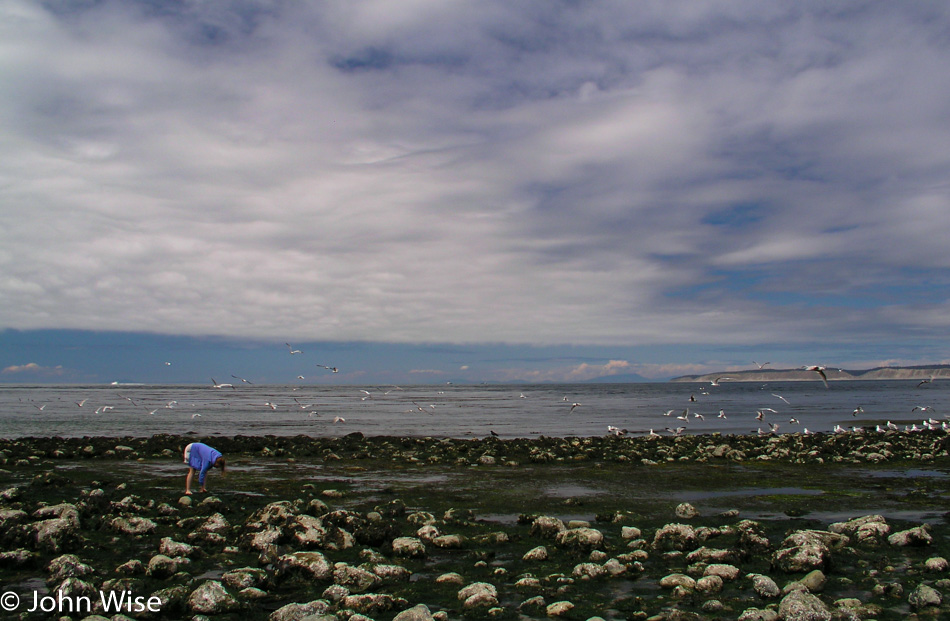
Low tide for seagulls is like the buffet for the non-discriminating obese on a budget. Here again, we are confronted with a dramatic change between this trip and the time I’m blogging about it. What I’m referring to is the buffet. By 2020, they are mostly gone. A few exist here and there, and Chinese buffets seem to be going fairly strong yet, but by and large, they have left the dining scene. Maybe Instagram proved to be part of the reason, as just how photogenic is it to shoot a selfie hovering over the restocked fried chicken trough? Then it seems the budgets of the elderly were negatively impacted as the buffet became too expensive even for them. Tie it all together with the much dreaded “Fried Rice Syndrome” caused by the bacteria Bacillus cereus, which propels its victim into simultaneous vomiting and diarrhea, and who really needs that?
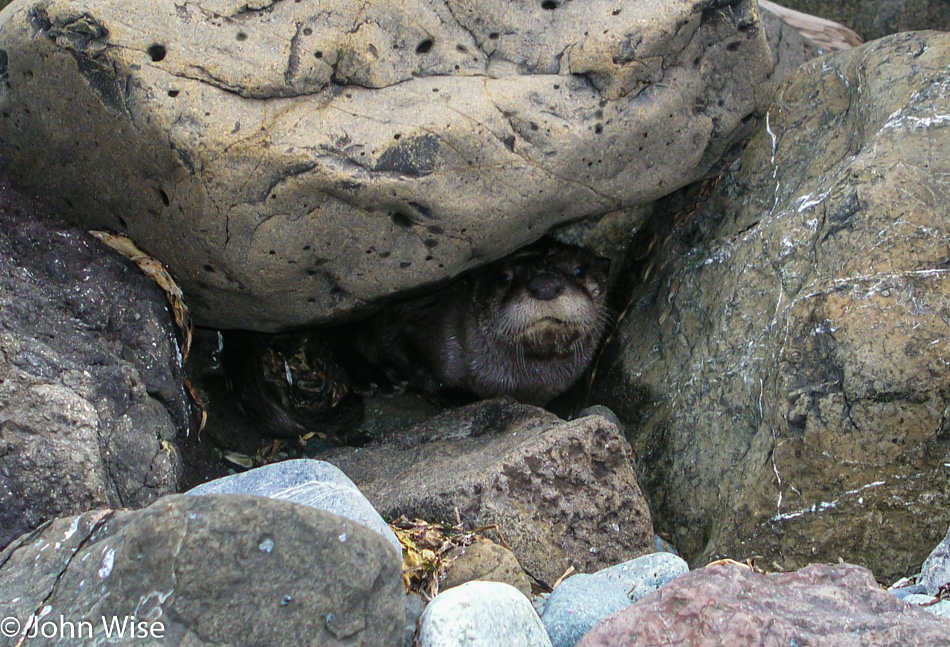
We’ve never seen an otter on land. You have no idea how badly we want this marine mammal to be a cuddly, affectionate fellow that would come out of hiding for some belly rubs, but that didn’t prove to be the case.
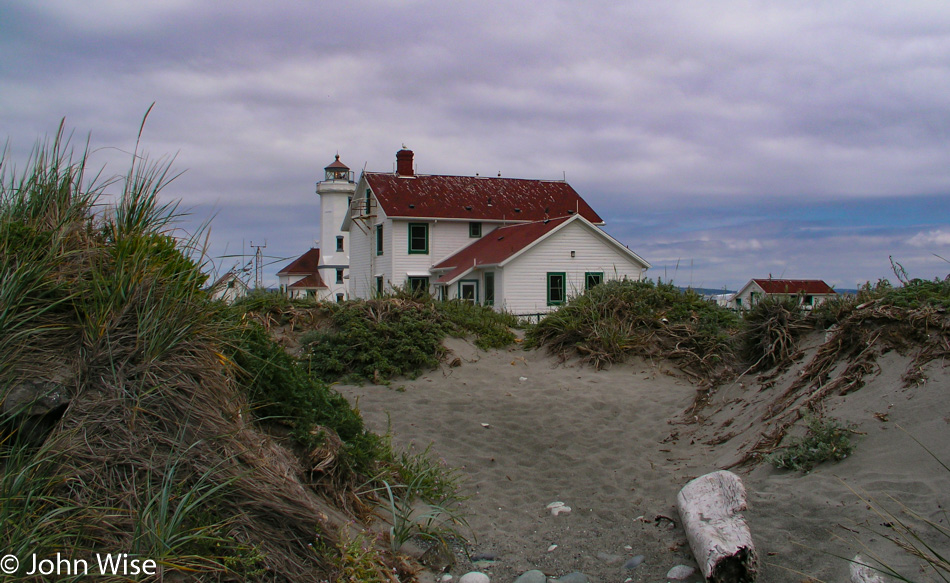
At the end of the spit of land here in Port Townsend, Washington, is this lighthouse which is the signal our time out here is coming to an end.
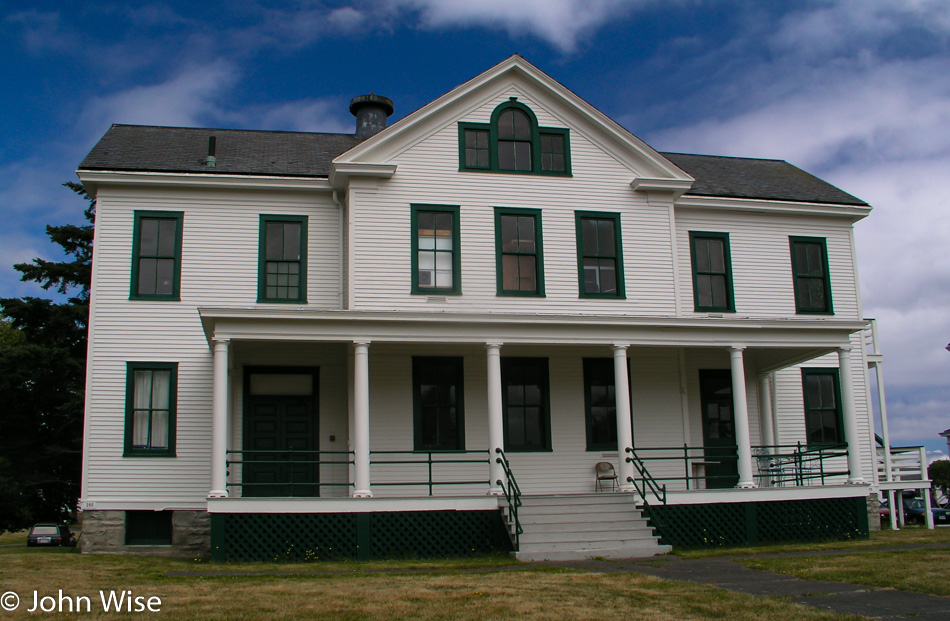
Fort Worden was peeked at briefly before making our way to the car. Not much else to add here, as there are no notes. Even Caroline is unable to pull further memories out of her braincase.
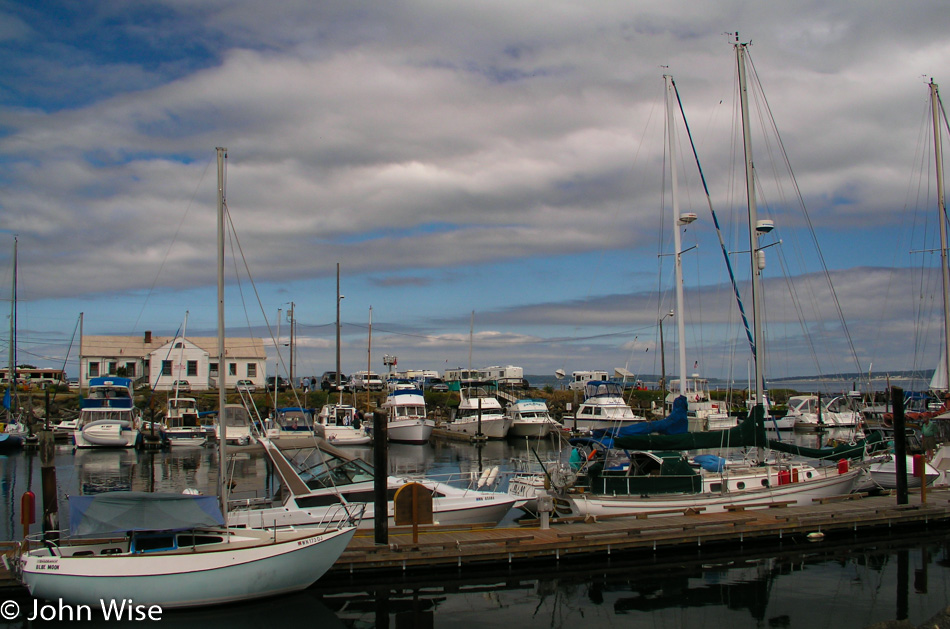
When you travel, what are the sights that you need to remember that will remind you of what was enchanting at the time? For us, it’s probably almost everything.
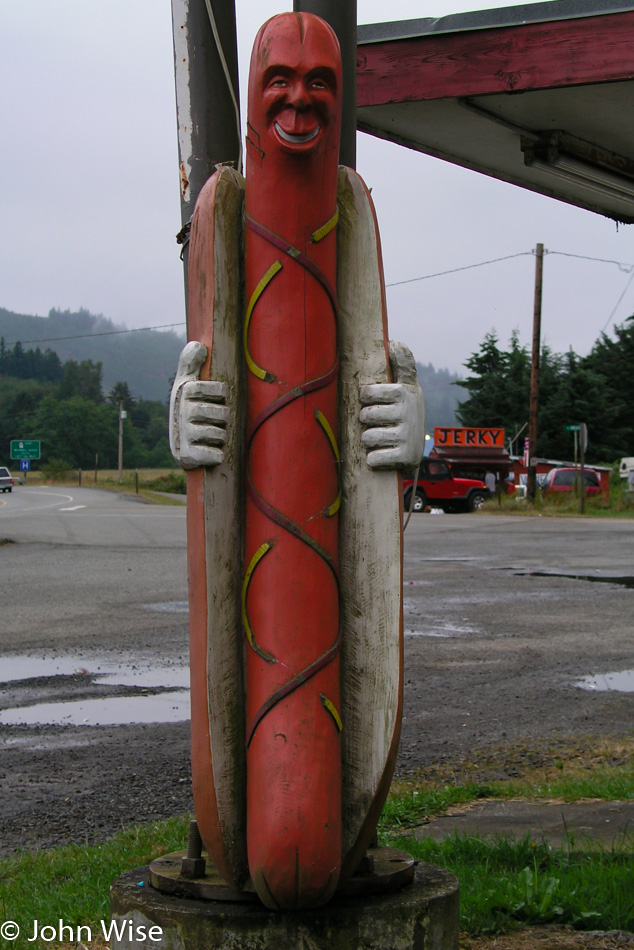
Creepy hot dogs exposing themselves is just one such sight guaranteed to make us want to return to a spot on the side of the road. Why we didn’t try to get someone to take a photo of us posing with this Discovery Bay icon is beyond me. Sixteen years later, the evil wiener of flashing perversion is a distant memory that has disappeared from the landscape; only his shadow might still exist for those who drive by and remember his unsettling smile. I have to wonder if he’s now a fixture in the Sea Change Cannabis Dispensary that stands at the location.
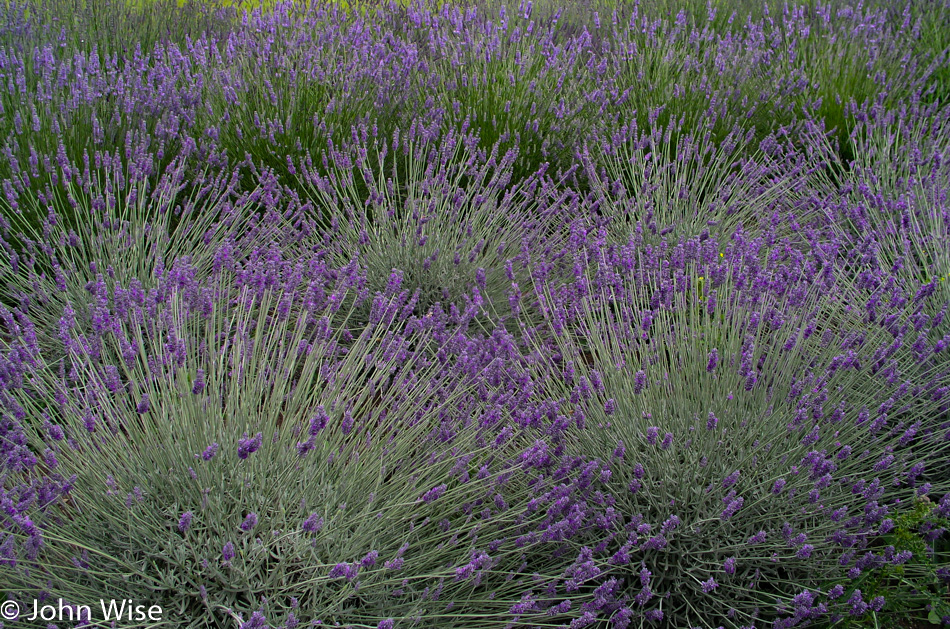
The lavender in bloom acts as a reminder of the lavender coffee we had in Sequim.
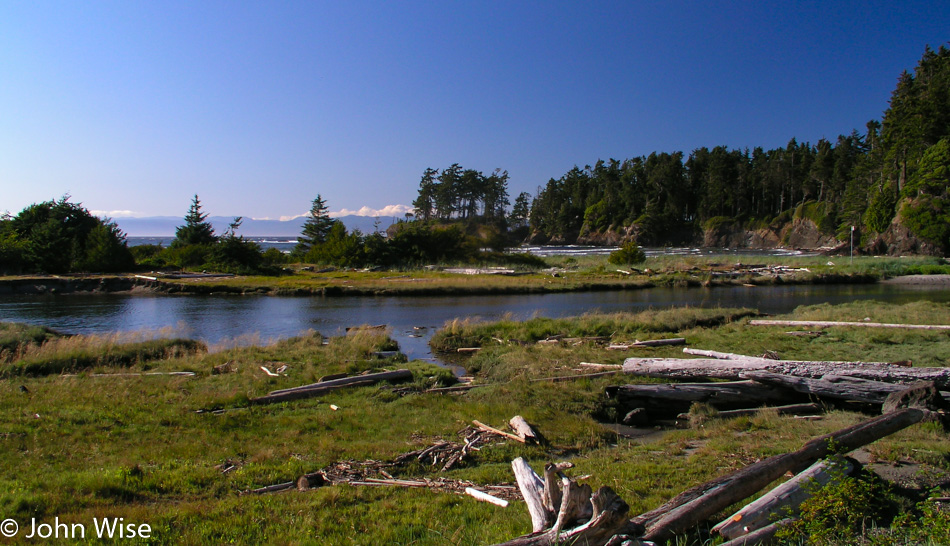
The last time we were out this way was back in November 2002, and the conditions were quite different. Cold and icy come to mind, but on looking at the photos, I see we also had a fair amount of blue sky. The one constant is the green.
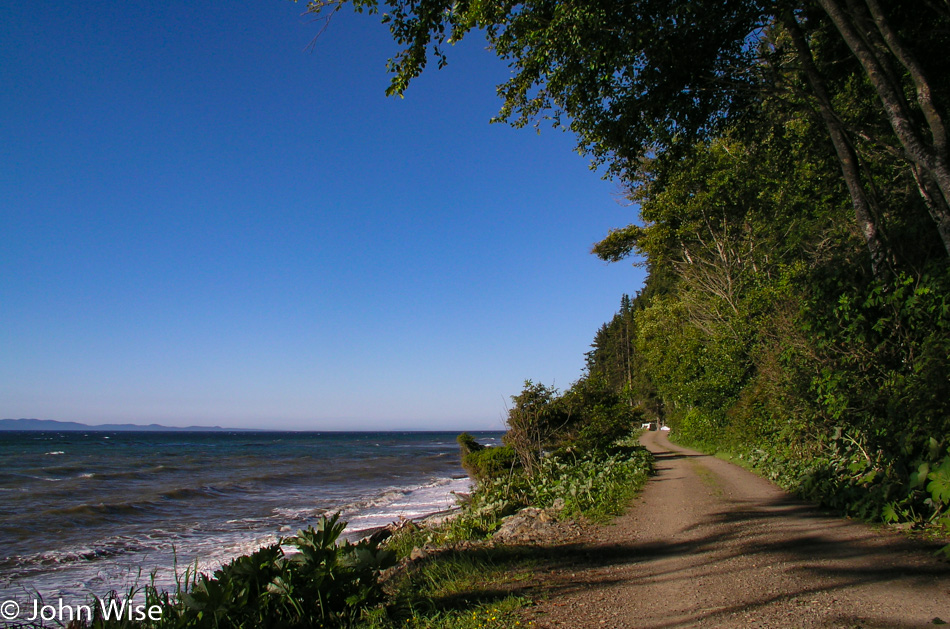
From Crescent Beach over to Whiskey Creek here on the Strait of Juan de Fuca, we found a drive that leaves everything to be in love with. The Halibut Hole cabin is an exceptional standout for lodging we should someday come back to.
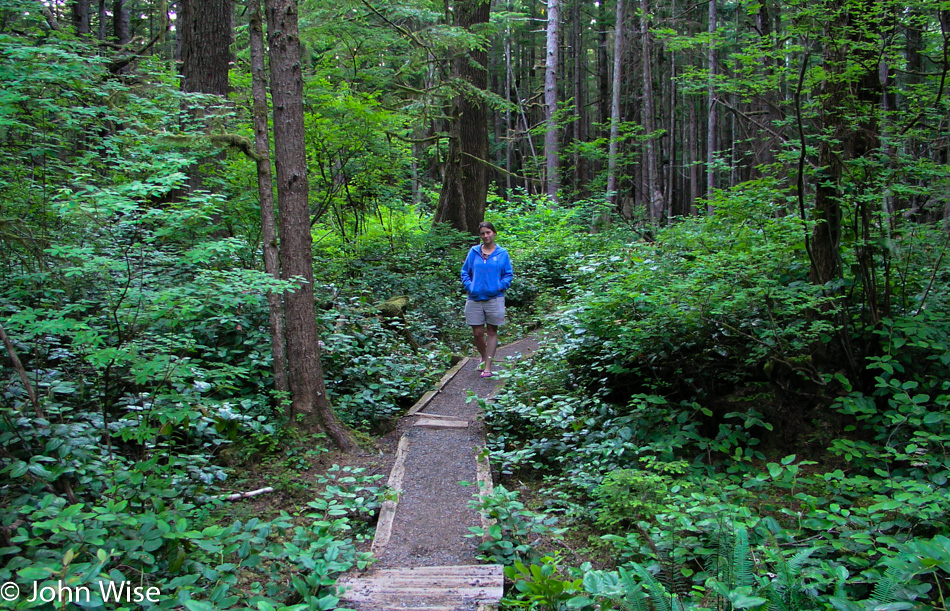
Having visited Cape Flattery on our previous visit, we decided to hike out to Cape Alava further south here in Ozetta on the western side of the Olympic Peninsula. After falling in love with the quiet little town of Forks we are making a return visit to once again stay at the Town Motel.
Note: four years after this visit to Forks, the town was put on the map by Arizona resident Stephenie Meyer, who wrote the Twilight saga featuring glitter vampires.